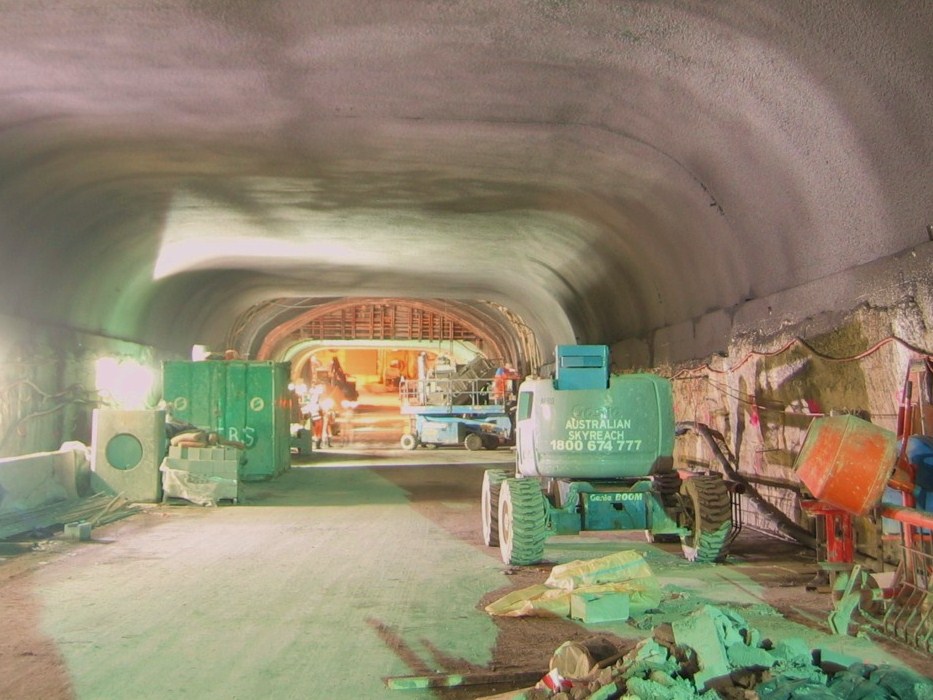
The new $680 million Cross City Tunnel marking the beginning of one of the largest and most complex infrastructure projects ever undertaken in New South Wales. The 2.2 kilometres long Cross City Tunnel will run the city between Darling Harbour and Kings Cross, linking the Western Distributor to New South Head Road and connecting to the Eastern Distributor and Domain Tunnel, cutting east-west travel times in central Sydney from twenty minutes to just two minutes. Baulderstone Hornibrook and global parent Bilfinger Berger (BHBB JV) won the design and construction contract. Construction is estimated to finish by late 2004, with the tunnel open to traffic in 2005.
As part of the agreed undertaking the Cross City Tunnel had to make provision for the future planned Metrowest underground rail connection. The route of this proposed rail line is undetermined at this time however the vertical alignment of the potential routes had to be reserved. This was achieved by the construction of major bridging slabs in the roof of the Cross City Tunnel which would form the invert of the Metrowest tunnels when built later without disrupting traffic in the Cross City Tunnel.
These bridging slabs consisted of 800mm thick reinforced cast in-situ concrete beams up to 48m long across the 17m span, capable of taking future loads of construction equipment above. To construct the beams the roof had to be over excavated leaving a 600mm deep gap to the roof of the tunnel after the slabs were poured. GFWA were appointed by BHBB JV to determine a method for backfilling this void and to carry out the works.
The void was filled with an aerated sand cement grout through three grout lines to completely fill the voids which were up to 300m3.
